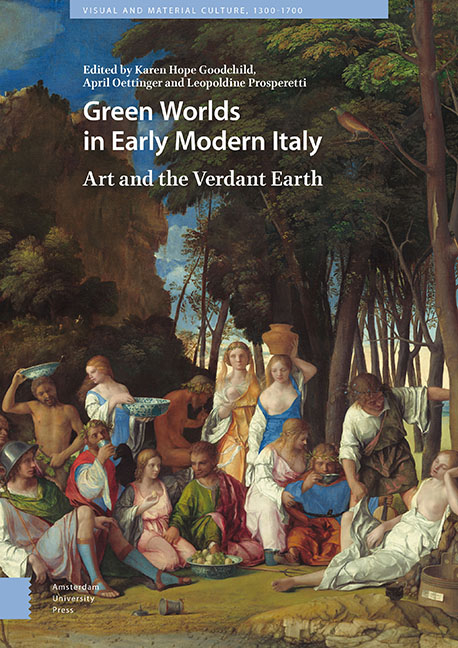Book contents
Afterword: A Brief Journey through the Green World of Renaissance Italy
Published online by Cambridge University Press: 21 November 2020
Summary
Abstract
This essay explores the art of the Venetian green world as seen in the paintings of Giorgione and Titian, in response to the claim of a great scholar of Venetian art who, speaking for many art historians, once wrote: “Not until the actual text on which a picture such as this [Giorgione's Tempesta] has been found can we claim that we understand its subject.” I contend that although texts can guide us toward an understanding of works of art, there are inevitably gaps between those texts and the works of art that they are said to illuminate. Such gaps can, however, be partially closed by careful attention to what one sees in works of art and conveyed in careful, evocative descriptions. In short, description is interpretation.
Keywords: Giorgione, Titian, Description, Interpretation, Green Worlds
Years ago, I published an essay offering a fresh interpretation of a major work of art in a respectable journal. Time went by and I had a new thought about the same work, and so I sent that aperçu to the journal that had published my earlier essay. The editor sent the piece to an outside reader who recommended against publication, saying that I had had my chance to publish my ideas years before, claiming, rather strangely, that it was too late to add anything. The editor deferred to the reader. The implication of the rejection was that one has an idea, and that is the end of that: a very queer notion indeed, since one's thinking evolves over time. I subsequently published my new thoughts in another journal. And so the rejection did not matter.
I mention this story here because it is my conviction that interpretation is never finished, and one can return to works of art time and time again to see aspects of such art in new ways. I have been writing about Giorgione and the green world of Venetian painting for decades, and I scarcely think I have gotten to the bottom of the subject. In what follows I return to many works I have previously discussed. I am delighted to have the opportunity to expand here upon old ideas with new thoughts. I remain convinced that one never finishes with such works as Giorgione's Tempesta or Titian's Sacred and Profane Love. Art historical interpretation is not static; it is forever evolving.
- Type
- Chapter
- Information
- Green Worlds in Early Modern ItalyArt and the Verdant Earth, pp. 241 - 254Publisher: Amsterdam University PressPrint publication year: 2019



